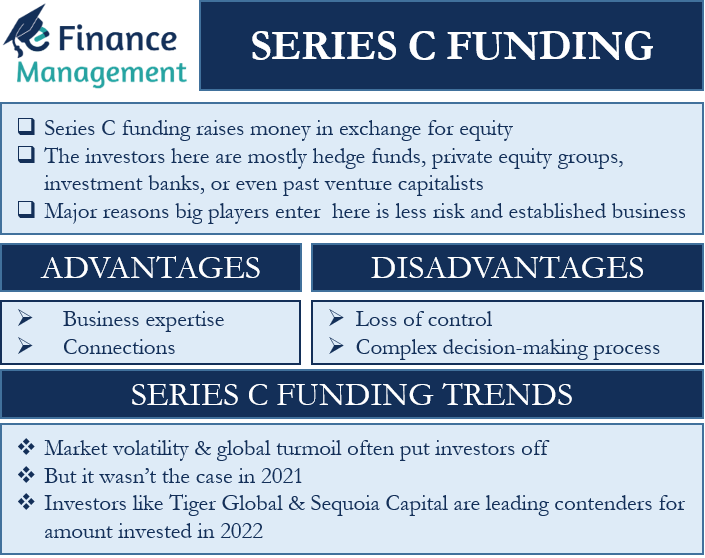The prospects of growth for a company can be endless, and so will be the requirement for more money. From ideation to becoming an MNC, companies require more funds as they climb up the ladder.
What is Series C Funding?
In simple words, series C funding raises money in exchange for equity. Of course, there will be certain differences in terms of money raised, who is investing, and in what type of company. Normally, when businesses are in the market to raise money in series C funding, they have already attained a certain level of success in terms of market position, revenues, or profits. Thus, such businesses look for additional funds to scale up their operations. This is done through diversification, expansion, or acquiring other similar companies in the market. For example, a burger chain might be looking to acquire or merge with another burger chain if it feels that the synergies gained from the merger will exceed the costs. More often than not, series C funding is meant for companies that want to build on their success.
Moreover, in series C, the investors are mostly hedge funds, private equity groups, investment banks, or even past venture capitalists. The primary reason for reinvesting is that they want to increase their stake in the company. One of the major reasons big players enter the scene is less risk and established business. Most of the time, the money raised is significantly higher than the earlier funding rounds. According to various sources, the average round size for Series C is $55,000,000. Whereas for Series A and Series B, it is $15,700,000 and $30,700,000 respectively.
Advantages of Series C
Apart from raising money, some of the advantages private equity, investment banks, and hedge funds provide are business expertise and connections. Usually, big investment firms have business connections that help businesses grow and scale up via networking. Sometimes, these benefits play a major role in businesses going for various funding rounds.

Disadvantages of Series C
One of the most obvious and major drawbacks of raising money via series C funding is loss of control. In the previous rounds, the firm has already exchanged a significant equity stake with investors. Hence, raising another round will result in giving up more equity. With owners diminishing stakes, the decisions and say of the investors or venture capitalists increase. This leads to a cumbersome decision-making process for the firm.
Series C Funding Trends
Market volatility and global turmoil often can put investors off, but it certainly wasn’t the case in 2021. In 2022, continuing the trend, investors like Tiger Global and Sequoia Capital are leading contenders for the amount invested. Due to the ongoing Russia-Ukraine conflict, we might see investors betting more on later-stage funding like series C and series D instead of putting money in early-stage companies.
Before a business reaches this stage, it has already raised money via four different stages and has lost equity at previous stages. For this reason, the Series C round is often the last one before a company goes for an IPO.
Conclusion
To conclude, seed investors and series A, B, and C investors all help and invest with the motto of bringing ideas to fruition. Few Companies also continue to raise more rounds like series D or E funding. They tend to do that either because they haven’t been able to meet their targets. Either with the series C round or because the company wants to go for a final push before an IPO.

